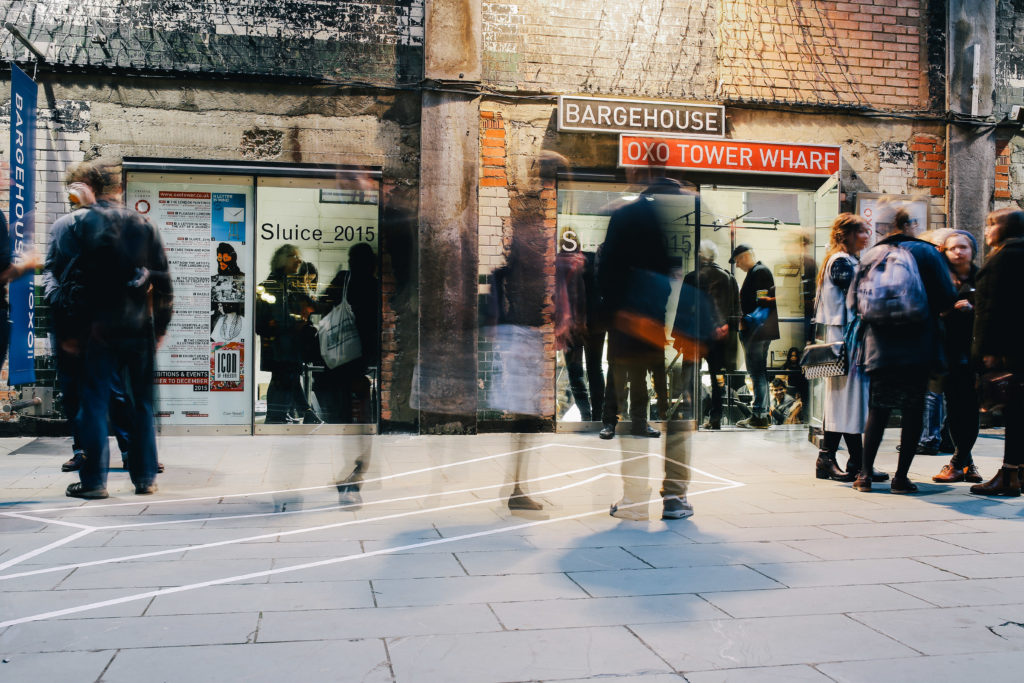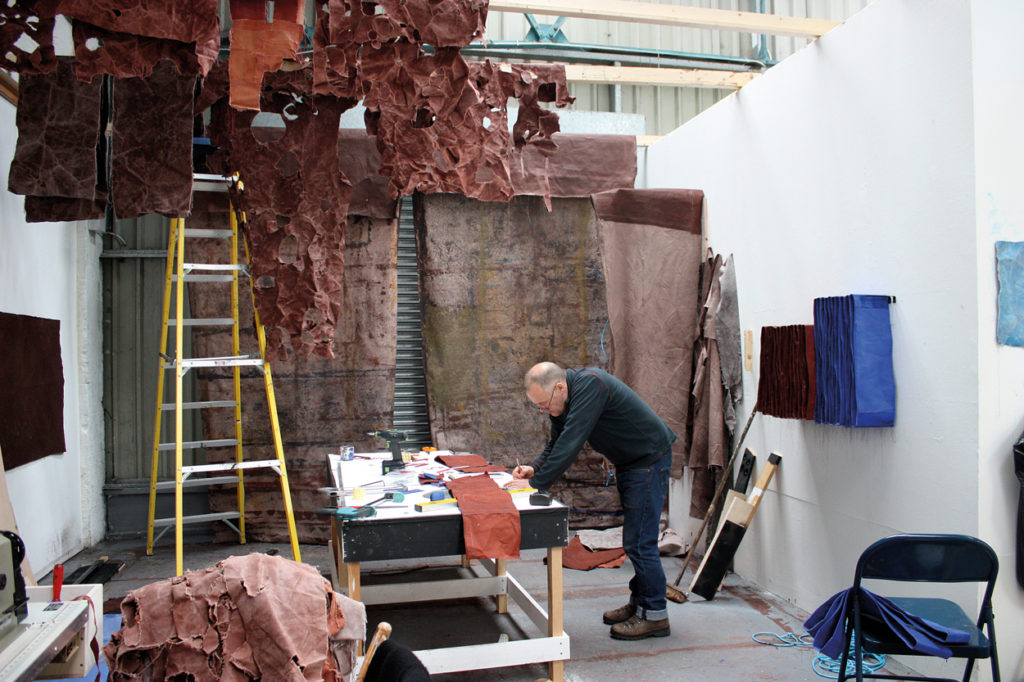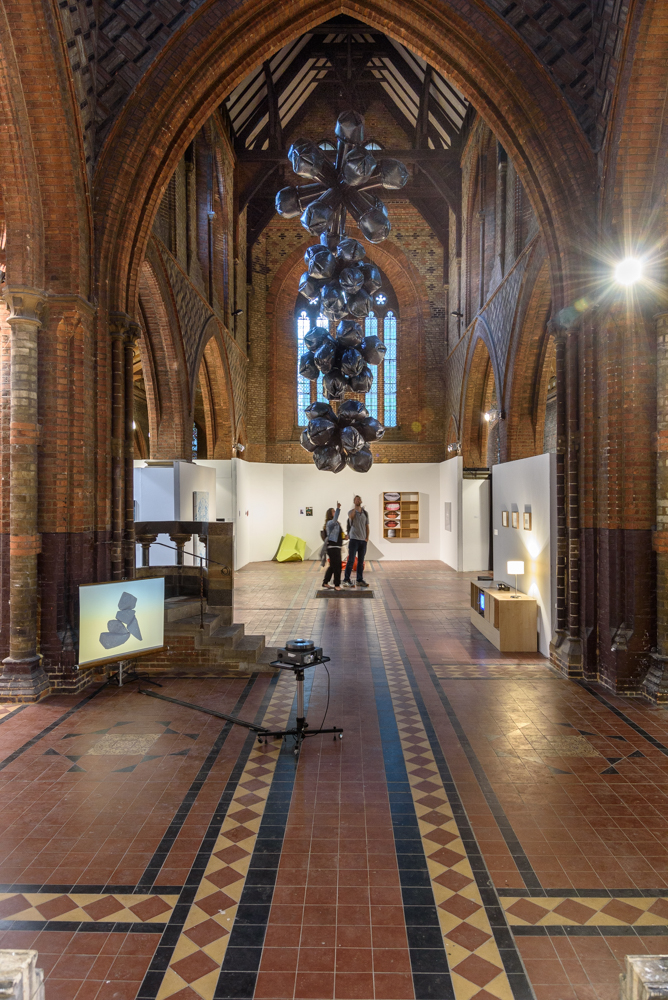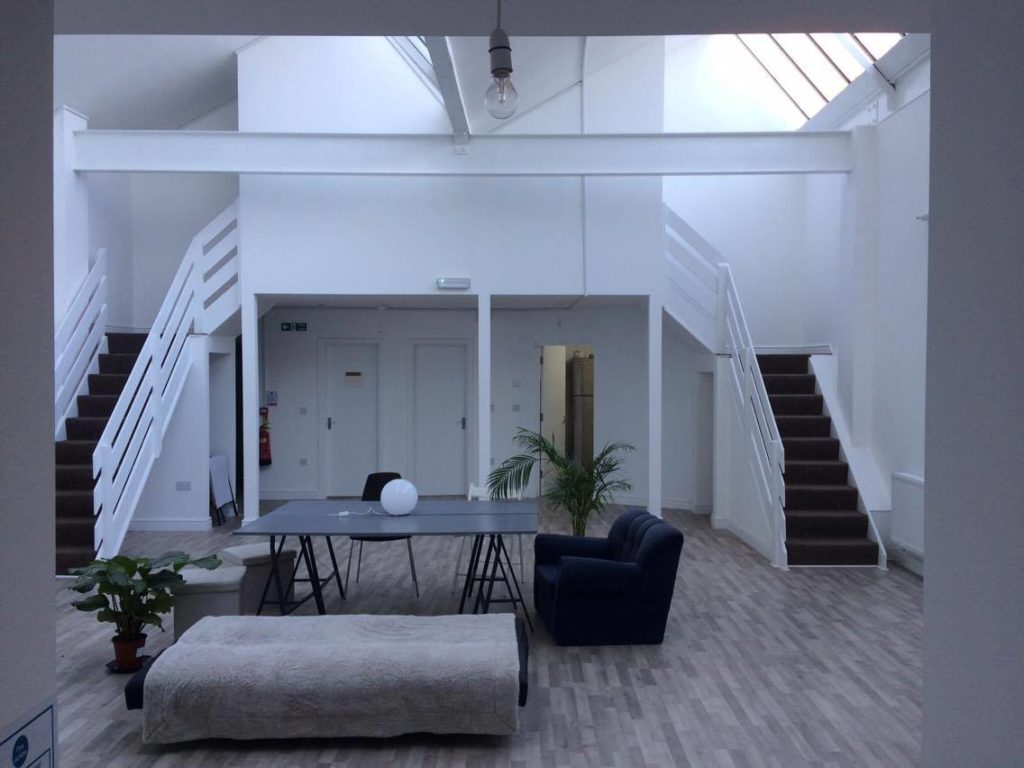Art World
Meet the Key Players Shaking Up London’s Alternative Art Scene
A group of exhibition spaces are challenging the white cube.

A group of exhibition spaces are challenging the white cube.

Caroline Elbaor

“Is there such a thing as an alternative scene [in London] anymore?,” one London gallerist asked artnet News when discussing the subject of this story. “Let me know…”
Though this particular gallerist’s hesitance might suggest otherwise, London’s alternative art scene does indeed remain alive and well, with innovative artist-run hubs, non-profits, experimental curatorial initiatives, and project spaces flourishing underneath the city’s glitzy blue-chip veneer.
The overarching theme among these organizations, it seems, is to challenge the traditional exhibition space, how it can take on new forms outside of the simple white cube.

Jupiter Woods, with a work by Emily Jones. Photo courtesy Jupiter Woods.
Jupiter Woods, for example, was launched on August 1, 2014 by a group of six recent graduates from the Goldsmiths MFA Curating program, after two months of renovation on an old house they still occupy, located in Southeast London.
“Since November 2015, the program shifted its emphasis from developing a program of mainly solo and group exhibitions to an increasingly research-led, introspective approach,” they said in an email interview with artnet News.
Currently, Jupiter Woods is run by Hanna Laura Kaljo, Lucy Lopez, and Carolina Ongaro. Since the change in leadership direction, they’ve “began to experiment with formats such as a public studio visit series, in other words, public peer mentoring sessions with local and international curatorial and artists-run-spaces.”
“We focused on exploring the domestic/public division of the space and ways in which we could implement this in our program, thinking critically about how a work becomes public and which elements might remain withdrawn,” they added.
As Jupiter Woods moves forward, residencies will continue to be an integral part of their program, in addition to exhibitions and online publishing. This past summer, they even collaborated with a like-minded organization in the US, Bushwick’s Interstate Projects.

Sluice in 2015. Photo courtesy Sluice and Laura Mott.
Billed as an “alternative art fair,” Sluice was launched in 2011 by co-founders Karl England and Ben Street.
The “fair” functions as a biennial composed only of artist-run spaces or curatorial projects, and appears in different spaces every two years. “In our aim to be the meeting place for non-profit, artist- and curator-run, and emerging practices. We’ve constantly altered our shape to suit the needs of the participants and demands of the locale,” England said.
In the meantime, Sluice functions year-round—without a bricks-and-mortar space—with the publication of a magazine for critical and experimental writing, an active online presence with a large archive of talks and interviews, and a complete programme of talks and workshops.
Street and England have, like Jupiter Woods, also crossed the pond to team up with existing Brooklyn-based galleries and launched “Exchange Rates,” which plays on “shared spaces and cultural currencies” to create an exposition of international curatorial programs that come together to share a common space.

Simon Callery’s show in May 2016. Photo courtesy of DOLPH.
Set in Streatham, which was devoid of a contemporary art culture until its arrival, DOLPH Projects inhabits a grey area between residency and exhibition space. The brainchild of two artists, Paul Cole and Tash Kahn, DOLPH was conceived in November 2014 as a non-profit visual arts project presenting six shows per year, each challenging artists to curate their own work through a brief.
“Artists know their work better than anyone so it made sense to give them curatorial free reign. But we don’t expect (or want) the DOLPH brief to be easy for artists. We want them to reveal the blood, sweat, and tears of their practice—a visual story of what makes them tick,” Cole and Kahn told artnet News.
“In the process, the audience gets to see something the artist would normally keep under wraps— a different kind of show in a functional, slightly-rough-round-the-edges space that’s not unlike a studio.”
The venue itself is one of 40 cell blocks formerly used for storage, with ten-foot walls, concrete floors, and a metal shutter door.
“It’s hardly a white cube gallery. It’s a functional space … Luke Gottelier was the first to use the space as a studio, making the space part library, part workshop. He had an open-door policy,” Cole and Kahn added.
“I love the fact that artists will come and make work here under these circumstances, it’s very brave and incredibly generous, but equally it doesn’t suit every artist to answer the brief in the form of a residency,” Cole continued. “I think the beauty of this project is that we never know how the next artist will respond.”

Florence Trust studios. Photo courtesy of the Florence Trust.
Tucked away in the leafy streets of Highbury, the Florence Trust—which is situated in a neo-gothic former Anglican church dating back to 1865—is home to 12 studio spaces that are awarded annually to a diverse roster of artists, who range in age, nationality, and type of practice.
As a rule of thumb, successful applicants to the residency must not be existing recipients of institutional support nor represented by a commercial gallery. As such, the Trust’s aim to nurture underexposed artists in their development remains fully intact.
Founded 25 years ago by artist Patrick Hamilton—who abandoned his Florence studio to establish an “inspiring space” for fellow artists in London—the Trust was initially “intended as a response to the increasing number of anonymous studios within post-industrial warehouses,” director Paul Bayley explained to artnet News.
Hamilton’s answer to these isolated workspaces was to create communal, open-plan studio spaces set in the atypical backdrop of the old St Saviour’s church.
Community and collaboration remains at the heart of the Florence Trust. “We encourage our group of artists to socialise and collaborate and they often show together, share opportunities,” said Bayley. “In a couple of cases, [some artists] have even married each other.”
In 2000, the Florence Trust officially implemented a formal one-year program providing mentorship and career development, which culminates in a show at the old church and catalogue publication.

clearview. Photo courtesy clearview.
The newest youngster on the scene is clearview, which opened its inaugural exhibition this past Saturday. Discovered on Airbnb, the space is run by a group of five students studying curating at Royal College of Art—Canan Batur, Cédric Fauq, Joss Heierli, Nilz Källgren, and Filip Zezovski Lindh—who use it to stage exhibitions between hosting Airbnb guests.
Based on Fountayne Road, Tottenham, in North London, clearview is a self-described “residency program, a project space, a series of events, and a collective, dedicated to the vision of invited practitioners.”
“clearview’s residency program allows artists to shape the length and form of both the program itself,” Fauq told artnet News, “and the shape of its outcome, with five supporting curators.”
So, to answer the original question, there is such thing as an alternative art scene in London—one just needs to know where to look for it.